A decade ago, digital advertising was nothing more than a banner ad placed on a website. Today, the internet is accessible everywhere we go, on our tablets and mobile phones. This has spurred tremendous growth in digital advertising. U.S. digital ad spending will reach $83 billion in 2017, representing an increase of 16%, according to eMarketer’s latest forecast.
Facebook and Google control much of this spending. Facebook’s ad revenue is projected to jump 32.1% while advertisers’ spending with Google will increase 14.8%. Overall, Google controls 40.7% of the U.S. digital ad market, followed by Facebook with 19.7%.
The numbers are even larger when just looking at mobile ad spend. Google will make up 32.4% of mobile spending this year while Facebook generates 24.6% of spend, meaning that the two companies collectively make up 57% of mobile ad spend.

Programmatic Advertising is on the Rise
Programmatic advertising is gaining even more in popularity this year. Programmatic advertising refers to the use of automated systems and data to make media buying decisions without human interference.
Here is an overview of how programmatic advertising works:
- Brands and advertisers bid for ad space.
- These brands/advertisers place variables based on the price and market segment they are targeting.
- While a web page with an ad space is being loaded, the information that’s been gathered about the visitor is sent back and forth to an ad exchange.
- The space gets auctioned off to the highest bidder and the ad is placed in the space- all taking place within a fraction of a second.

Consumer Confidence in Advertising is Increasing
New research from YouGov found an increased shift in consumer confidence toward advertising. In YouGov’s 2014 survey, only a little over half the general population (56%) believed that the ads they saw, read, or heard were honest. YouGov conducted the same survey recently and the results showed that almost three-quarters of respondents (72%) now had confidence in the honesty of the advertising they saw. The proportion of respondents who claim to trust the ads that they see, read, or hear has also risen from 50% in 2014 to 61% this year.
Digital Advertising Produces ROI
Nielsen completed more than 800 studies over the past seven years, collaborating with more than 300 CPG brands and 80 companies to measure the correlation between online advertising and offline consumer purchases.
Nielsen concluded that brands can experience a return of almost three dollars in incremental sales for every dollar spent in online advertising that has been precisely delivered using purchase-based information.

In another study by BrandScience and Microsoft, it was shown online advertising not only delivers excellent ROI efficiency itself but also makes other media spend work harder.
When the researchers compared the difference in ROI performance between studies that have an online element and those that do not, the results were striking — adding online to the media mix has a positive impact on the campaign ROI for all media, from a delta of +4% for radio to +51% for outdoor and an astonishing +70% for television.
Connected TV is Taking Over
Connected TV refers to any television set that can be connected to the internet, either directly or through a set-top box or streaming device. This allows users to access online content such as streaming video services, social media, and online shopping directly from their TV screens.
Connected TVs are often equipped with built-in Wi-Fi, Ethernet ports, and other connectivity features that enable users to connect their TVs to the internet wirelessly or via a wired connection. Some popular examples of connected TV platforms include Roku, Amazon Fire TV, Apple TV, Google Chromecast, and Smart TVs from various manufacturers.
With the rise of streaming video services like Netflix, Hulu, and Amazon Prime Video, connected TVs have become increasingly popular as they provide users with a more convenient way to access and enjoy their favorite content on the big screen.
The Growth of Mobile Advertising
Americans spend over 10 hours a day on screens and about five of those hours are spent on their smartphones. Mobile will be the main driver of digital’s growth in 2017, accounting for over 70% of digital and more than one-quarter of total media outlays. Growth will remain in double digits through the end of the forecast, with mobile ad spending expected to surpass TV in 2019.
Marketers are now able to reach their intended audience on mobile 60% of the time. That percentage seems impossible on desktop or traditional advertising but is the norm for mobile advertising.
Digital advertising today is now more sophisticated, personalized, and relevant. Consumers spend more time online than ever before and digital advertising offers an ideal way to reach multi-device, multi-channel consumers. Marketers are also able to target consumers with laser-focused precision as never before. Brands are no longer limited to just demographics and firmographics but can target the exact audience most likely to purchase based on thousands of lifestyle, personality, behaviors, and purchase intent segmentation variables.
Learn how Porch Group Media can help you get to know your customers better and reach them across channels to boost your marketing success. Contact us to get started!





